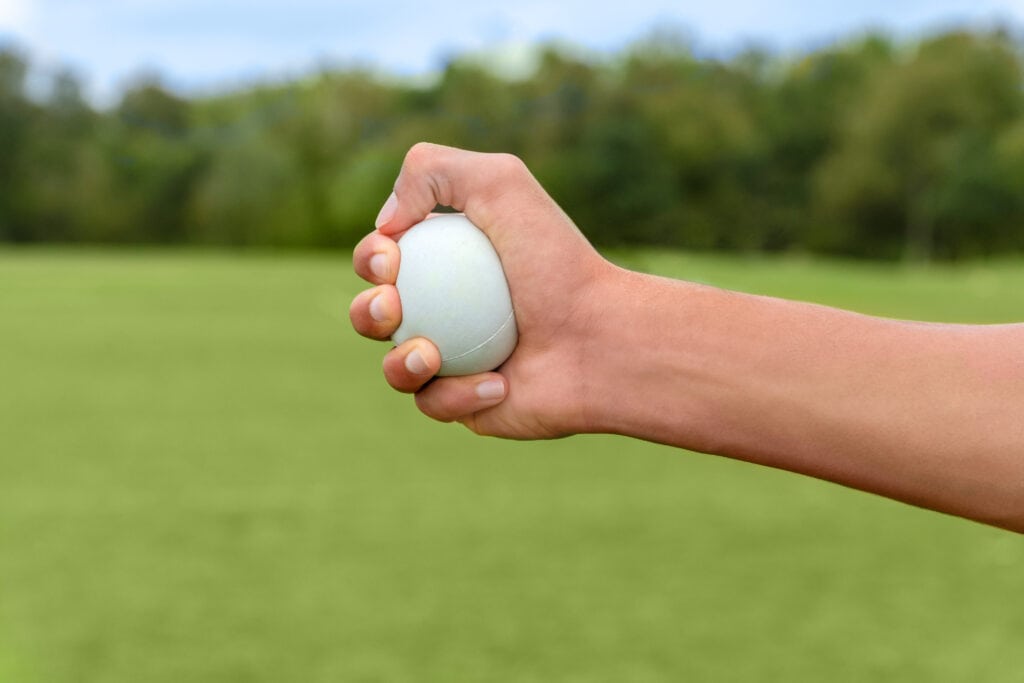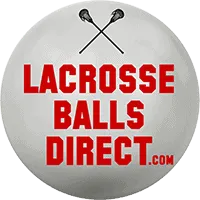Lacrosse Ball Safety Standards and Certification
Home » Lacrosse Blog » Lacrosse Ball Safety Standards and Certification
The safety and integrity of everything on your lacrosse equipment list, but especially lacrosse balls, cannot be understated in a sport where every split-second decision and move counts.
The certification of lacrosse balls ensures the safety of players and adherence to stringent game standards. It keeps the playing field level and prevents big moments being influenced by variability in balls. It leaves it in the hands of the players, ensuring the better team ultimately comes out on top.
We’ll discuss the significance of NOCSAE, NFHS, and NCAA certifications below in regard to maintaining player safety, complying with league regulations, and guaranteeing consistent ball performance.
Then, we’ll introduce our selection of practice and game-certified lacrosse balls for sale here at LacrosseBallsDirect! We’re the most trusted choice for NOCSAE ball sourcing online. That being said, let’s start with an overview of how lacrosse balls are certified.
How are Lacrosse Balls Certified?
The certification process for lacrosse balls is a meticulous and crucial procedure that ensures the safety and quality of the balls used in the sport. This process adheres to specific standards and testing methods to verify that the balls meet the required performance criteria.
Understanding NOCSAE Standards
The National Operating Committee on Standards for Athletic Equipment (NOCSAE) has set forth a standard, known as NOCSAE DOC 049, which establishes the performance requirements for new lacrosse balls.
These requirements are critical to ensure that the balls are safe for use in both practice and competitive play. The criteria include:
- Material and Construction: Lacrosse balls must be made of smooth or slightly textured, solid, elastomeric material without systematic dimpling or raised ridges. The texture depth should not exceed 0.007 inches or 0.17mm. Solid implies that the ball is of homogenous construction without an intentional airspace.
- Weight and Size Specifications: The weight of a certified lacrosse ball must fall within the range of 5.0 to 5.25 ounces, and the circumference must be between 7.75 and 8.0 inches. These dimensions are crucial for consistent performance across all levels of play.
- Compression and Bounce Tests: The ball’s compression at 25% displacement should be within 130 ± 20 lbs. The coefficient of restitution (COR), which measures the ball’s bounciness, must fall between 0.60 and 0.70. These tests, following ASTM F1888 and F1887 standards, ensure the ball reacts predictably when in play.
The Role of Testing in Lacrosse Ball Certification
Before lax balls are even tested, they first must be conditioned. Each ball is conditioned at a specific temperature and humidity for a minimum of 24 hours. This ensures that the balls are tested under uniform conditions.
The sample size calls for at least a dozen balls of each model to be tested. The testing includes measuring the ball’s mass, circumference, compression (C-D), and COR. These procedures are essential for ensuring that each ball adheres to the established standards.
The NOCSAE Badge of Trust
Upon passing testing and becoming a certified lacrosse ball, a permanent replica of the NOCSAE seal must appear on the exterior of the packaging, indicating that the balls meet the necessary standards. The use of the NOCSAE logos is strictly regulated and requires a valid license agreement.
The Importance of Using Certified Lacrosse Balls for Safety and Performance

Certified lacrosse balls are essential not only for the safety of the players but also for maintaining the integrity of the sport. There are also legal risks that come with using improper lacrosse balls in a sanctioned gameplay setting.
Injury Risks and Safety Concerns
Certified lacrosse balls are rigorously tested for factors like hardness and composition, ensuring they don’t pose undue risks to players.
Uncertified balls that don’t undergo these safety checks can be unpredictably hard or dense, increasing the risk of injuries, from bruises to more severe impacts like concussions.
The use of certified balls is critical to minimize the risk of injury. This is especially true in youth leagues, where players are still developing.
Impact on Game Integrity
Beyond safety, certified balls are crucial for preserving the game’s integrity. These balls maintain a consistent standard in terms of lacrosse ball size, weight, and bounce, ensuring that all players are competing under the same conditions.
This uniformity is vital for fair play, allowing players’ skills and team strategies to shine through without equipment disparities affecting the outcome.
Legal and Insurance Implications
Using uncertified lacrosse balls can have legal and insurance ramifications. Non-compliant balls may breach league regulations, leading to potential legal disputes, especially if injuries occur.
Additionally, insurance policies for teams and leagues often stipulate the use of certified equipment. Thus, using uncertified balls could invalidate these policies, leaving organizations financially vulnerable.
Tips on Identifying Certified vs Uncertified Lacrosse Balls
Ensuring you’re using certified lacrosse balls is key to complying with safety standards and league regulations. Here are some tips to help you distinguish certified from uncertified lacrosse balls.
Understanding Certification Markings
As we touched on earlier, you can always rely on that NOCSAE badge of trust. Certified lacrosse balls will have the NOCSAE seal embossed on them. This mark is a clear indicator that the ball has met the necessary safety standards.
You can also check the ball for a verification mark or statement indicating that it has been tested and approved by the Safety Equipment Institute (SEI) or other recognized bodies.
Checking for Serial Numbers and Manufacturing Dates
Certified lacrosse balls often come with a unique serial number that can be traced back to their batch and production details. This number is crucial for quality control and recall purposes, if necessary.
Or, look for a manufacturing date on the ball. This information can sometimes be found in small print and helps verify the ball’s age and compliance with current standards.
Differences in Texture and Material
If you have a ball you know is certified, you can compare texture and other physical attributes side-by-side. Certified balls should have a smooth or slightly textured surface without significant seams or raised ridges. An excessively rough or irregular surface might indicate a non-standard or uncertified ball.
Similarly, assess the material quality. Certified lacrosse balls are made from solid, elastomeric materials, offering the right balance of hardness and elasticity. Uncertified balls may use inferior or inconsistent materials, affecting their performance and safety.
Role of Coaches and Organizations in Ensuring Compliance

Coaches and organizations play a pivotal role in ensuring adherence to the lacrosse ball safety standards we’ve discussed today. Here’s what you can do to protect your players, yourself, and the integrity of this game we all love so much.
Educating Players and Staff
Coaches and organizational leaders should conduct regular workshops or meetings to educate players and staff about the importance of using certified lacrosse balls.
This education includes understanding the risks associated with uncertified balls and the benefits of using certified equipment.
Regular Equipment Checks
Implementing a routine of checking lacrosse balls for certification marks before every game or practice session is essential. This ensures that all balls used meet the required safety standards.
This also has the added benefit of keeping your equipment fresh and up to date. Regular checks for signs of wear and tear can prevent the use of degraded balls that might no longer comply with safety standards, or may simply be past their prime.
Sourcing Certified Equipment
Above all else, you should take note of where you get your lacrosse balls. You can enjoy peace of mind by finding a reliable partner for certified lacrosse balls and sticking with them.
Maintaining records of purchases, including details of the supplier and the certification status of the balls, is critical. This not only helps in ensuring compliance but also serves as a reference in case of equipment audits or safety checks.
If you’re wondering where to find NOCSAE, NFHS, and NCAA-certified lacrosse balls online, you can eliminate all stress and uncertainty by sticking with Lacrosse Balls Direct!
Enjoy Peace of Mind Ordering NOCSAE, NFHS, SEI, and NCAA Certified Lacrosse Balls!

Experience the confidence and assurance of choosing NOCSAE, NFHS, SEI, and NCAA Certified Lacrosse Balls from LacrosseBallsDirect.com.
Every ball you buy meets the highest standards of safety and performance. Forget the uncertainty and stress of uncertified balls for good. With our top-grade, affordable selections, you’re equipped for success whether in practice or competitive play.
Our extensive range, including our innovative textured balls that maintain cleanliness and grip, caters to every need. Plus, our custom lacrosse balls process is a simple and seamless way to add a personal flair to your gear or outfit your team.
Shop with us and enjoy the peace of mind that comes with a 100% satisfaction guarantee, backed by a team dedicated to exceeding your expectations.
We also have other lax essentials, from lacrosse netting replacement to lacrosse ball bags. So, take a look around and see what we have in store for you as we wrap up our guide to the lacrosse ball safety standards.
Final Thoughts on Lacrosse Ball Safety Standards and Certification
The significance of lacrosse ball safety standards and certification cannot be overstated. This goes beyond compliance, it’s a matter of safety and integrity. You’re just a few clicks away from lacrosse balls certified to the highest standards, so why settle for less?
You can learn more about lacrosse for beginners in our blog. We have similar resources on topics like how long is a lacrosse game, how much is lacrosse gear, best lacrosse nets, how much do lacrosse players make, the best lacrosse drills, lax cleats, lacrosse ball degreaser, and more.
Otherwise, it’s time to invest in the best lax balls now that you know how lacrosse balls are certified, why it matters, and what separates our selection from the alternatives.
We take pride in offering a vast selection of NOCSAE, NFHS, SEI, and NCAA-certified lacrosse balls, ensuring that every player has access to the safest and most reliable equipment. Get yours today!
